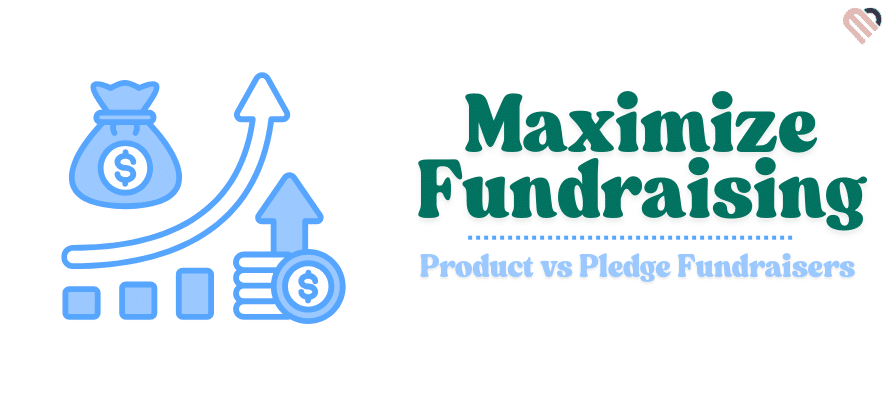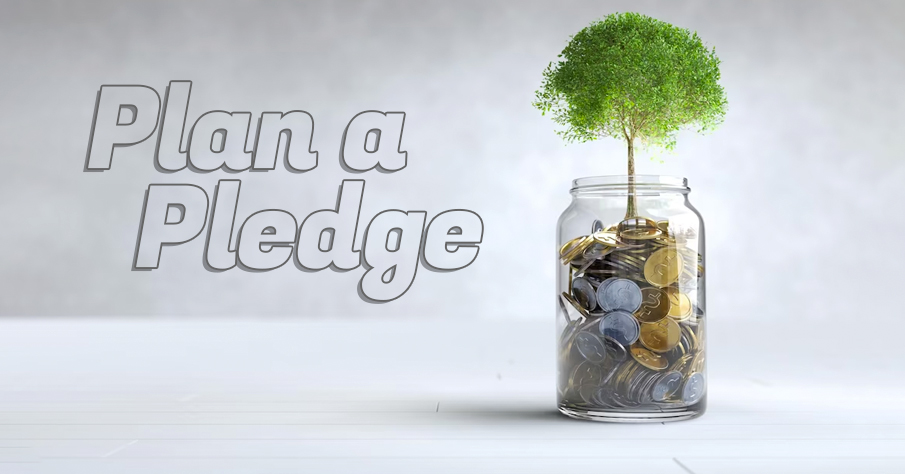



Choosing the right type of fundraiser is crucial for maximizing both profits and participant engagement. In this guide, we’ll delve into the distinctive characteristics of product fundraisers and pledge fundraisers, helping you determine which aligns best with your organization’s goals and community. Discover the key strategies for maximizing fundraising profits through effective fundraising options.
s
Product fundraisers involve selling high-quality items to supporters, with a portion of the proceeds going directly to your cause. This type of fundraising is particularly favored by schools, sports teams, and community groups due to its straightforward nature and the tangible benefits it offers to contributors.
One of our top sellers, gourmet cookie dough comes in various flavors and is an easy sell, especially among families and students. Participants can take orders from friends and family, making it a fantastic way to involve children in fundraising in a fun and interactive way.
s
Quick to sell and easy to carry, candy bars are perfect for impulse buys at school events, sports games, or local businesses. They are available in multiple flavors, ensuring there’s something for everyone. This fundraiser is excellent for immediate cash generation and can be run several times throughout the year.
Seasonal flower bulbs offer a unique and beautiful way for supporters to contribute to your cause while enhancing their gardens. This fundraiser is especially popular in the spring and fall and appeals to a wide demographic, including gardening clubs and community organizations.
s
Customizable t-shirts featuring school mascots, team logos, or event-specific designs can foster a strong sense of community while raising funds. This option allows supporters to show their spirit and affiliation proudly, and it works well for large events like tournaments or community celebrations.
s
Immediate Profits: You earn a part of every sale, which can quickly add up, especially with popular items like cookies and candy.
s
Tangible Rewards: Supporters receive something valuable in return for their contributions, which can increase participation rates.
s
Inventory Management: Managing physical products requires upfront investment and careful logistics planning, particularly with perishable items.
s
Limited Reach: Physical sales are often geographically confined, which can limit your fundraising potential unless you also offer online sales options.
s

Pledge fundraisers involve collecting donations based on achieving specific goals or milestones by participants, such as running a certain distance, reading books, or performing community service. This type of fundraising emphasizes participation and personal achievement.
s
Participants solicit donations from their network for each mile they walk. This type of event is excellent for promoting health and wellness, along with community involvement.
s
Ideal for schools and libraries, participants raise money based on the number of pages or books they read over a set period. This encourages educational development and can be a great way to engage young readers.
s
Similar to walk-a-thons, but participants ride bicycles over a determined course or distance. This can attract a wide range of cycling enthusiasts, from casual riders to more competitive cyclists, broadening the fundraising appeal.
s
Scalable and Inclusive: Virtually anyone can participate, and there’s minimal upfront cost, making it accessible for all types of organizations.
s
High Engagement: These fundraisers often create a buzz in the community, encouraging more people to get involved and donate.
s
Dependent on Commitment: The success heavily depends on the participants’ ability to motivate their network to pledge and follow through.
s
Variable Income: Unlike product sales, the income from pledges can be less predictable and fluctuates based on participants’ success in meeting their goals.
s
While product fundraisers often provide quick, tangible profits, pledge fundraisers can generate significant income, especially if they are highly motivated and well-connected within their community.
s
Product fundraisers can require more hands-on management due to inventory and distribution needs, making them more logistically complex. Pledge fundraisers, while simpler in terms of inventory, need strong tracking mechanisms to monitor progress and ensure pledges are fulfilled, which can demand robust digital tools or platforms.
s
Pledge fundraisers generally lead to higher levels of engagement because they involve personal challenges and goals that participants are eager to share with their network. This can lead to wider reach on
social media and more personal stories that connect donors with the cause. Product fundraisers, while effective, often engage participants and donors on a more transactional basis.
s
Choosing the right type depends largely on your organization’s resources and objectives. If immediate funds are a priority and you have the capacity to manage inventory, a product fundraiser might be ideal. If you aim to build community and involve a larger audience without the upfront costs, a pledge fundraiser could be more effective.
s
Elementary School Success: A local elementary school implemented a custom t-shirt sale for their annual sports day, raising over $3,000. This event not only funded new sports equipment but also boosted school spirit.
s
Community Group Success: A community group held a seasonal flower bulb sale, aligning with their environmental mission, and doubled their typical fundraising results by offering a product that supporters were excited to purchase.
s
High School Track Team: The high school track team organized a walk-a-thon where each lap contributed directly to new uniforms and equipment. They raised over $5,000, significantly surpassing their goal through extensive community participation and online sharing.
s
Public Library Read-a-Thon: A public library ran a read-a-thon that not only increased donations but also boosted library memberships and community engagement, demonstrating the dual benefits of pledge-based fundraisers.
s
Engage Your Audience: Understand what motivates your community. Whether it’s the joy of receiving a new product or the satisfaction of achieving a personal goal, tapping into these motivations can dramatically increase participation and contributions.
s
Set Clear Goals: Clearly define what you aim to achieve with your fundraiser, both in terms of financial targets and community impact. This clarity helps participants stay focused and drives better results.
s
Effective Promotion: Utilize every available channel to promote your fundraiser. Social media, local newspapers, community bulletin boards, and word of mouth are all powerful tools. Consider creating promotional videos or live streams to generate more excitement and visibility.
s
Leverage Technology: Use online platforms and mobile apps to track sales and pledges. These tools can also simplify the process for participants and donors, making it easier for them to contribute and share the fundraiser with others.
s
Product fundraisers involve selling physical items, while pledge fundraisers rely on securing financial commitments based on performance (e.g., a walk-a-thon or read-a-thon). Both have their pros, but pledge fundraisers typically offer higher profits with less effort and overhead.
s
While product fundraisers offer immediate returns, pledge fundraisers often result in higher profits, as they do not require inventory and can reach a wider audience with less effort.
s
For product fundraisers, focus on high-margin items like cookies or candles, and ensure clear, compelling marketing. For pledge fundraisers, engage participants early, set achievable goals, and use digital tools to track donations and spread the word.
s
Selecting the right type of fundraiser is a strategic decision that should align with your organization’s goals, resources, and the interests of your community. Whether you choose a product or a pledge fundraiser, focusing on engagement, clear objectives, and robust promotion will help you maximize your profits and impact.
s
Are you ready to kickstart your fundraising efforts? Visit Midland Fundraising to explore our wide range of fundraising products and get expert advice on planning your next successful fundraiser. Let’s make your next fundraising event a remarkable success!